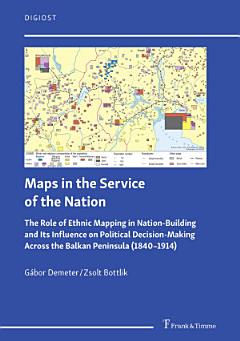The authors seek to answer whether the ethnic maps of the Balkan Peninsula created between 1840 and 1914 can be considered scientific products, or whether these maps were merely tools that served the political goals of the Balkan nation states and the regional agenda of the Great Powers. Despite evident methodological progress, maps were often contradictory indicating that propaganda purposes played an important role during their preparation.
The book investigates (1) the discrepancy between statistical data and their visualization on maps; (2) the reliability of Ottoman statistics and their Western and Balkan interpretations; (3) the adequacy of applied visualization techniques; and (4) the difference between the quality and content of maps created for the public and those created for political decision-makers. The authors apply interdisciplinary methods to deconstruct approximately one hundred maps analysing their background data, visualization techniques, and intentions behind the maps. Then, they redraw fifty maps with unified categories and scaling to promote comparison applying a different visualization technique.

